How to Build Rural Internet Connections Such As Village Broadband Connection and Rural Urban Connection ?
- Richard Wang
- November 1, 2024
- 7:31 pm

Preface
The global economic development imbalance has resulted in many rural areas and towns without Internet coverage, and network coverage in these areas is the primary factor in solving the imbalance between regions. However, there are many constraints on network coverage in rural areas. For example, there is no power supply, high coverage cost, low population density, no fiber resources, etc. This article mainly discusses and summarizes how to build rural interent connections to provide village broadband connection and rural urban connection from the aspects of power supply, network coverage and relay, and network terminals.
Table of Contents
1.Key Challenges in Building Rural Internet Connections
1.1 No Power Supply
Source: World Bank
From a macro-statistical point of view, the global dialing coverage is very uneven, and the electricity coverage rate is very low in some countries in Africa and Asia. Even in areas with high electricity coverage, such as the Latin America region, the electricity coverage rate is actually very low in some rural and mountainous areas. In developing countries around the world, even in areas with high electricity coverage, the power supply is still unstable, and long or short power outages are very frequent.
However, the contradiction is that the deployment areas of rural Internet connections such as village broadband connection and rural urban connection happen to overlap with these areas with low electricity coverage or unstable electricity supply. Therefore, the first condition for solving rural Internet connectivity is how to solve the problem of power supply.
1.2 The Population Density In The Coverage Area Is Too Low
There are intrinsic reasons why rural areas do not have general Internet services. Because these areas are often too low in population density and the ARPU (Average Revenue Per Unit) of each user is too low, if the government administrative power is not used to provide network coverage with general private telecom carriers, the balance of income and expenditure of telecom carriers will not be guaranteed, resulting in the reality that these areas do not have Internet. However, considering the fairness of a country’s entire population receiving information and education, the government of a country has to consider the network coverage of these areas. This has become another major challenge in the construction of rural Internet connections.
1.3 No ISP Services Like Fiber Resource
Another major challenge in providing network coverage in rural areas is that those areas often have no ISP services and no fiber. At this time, it is difficult to build a backhaul network. It is obviously not realistic to build new fiber for this area in terms of cost and construction time. At this time, it is necessary to choose the correct network backhaul method according to the scenario.
1.4 High Network Maintenance Cost
Because rural internet connections are often built in remote areas, the cost of routine maintenance and debugging is relatively high when network problems occur. Engineers need to be dispatched to the site, and the time and cost of the journey are much higher than those of networks within the city.
1.5 Complex Environmental Challenges
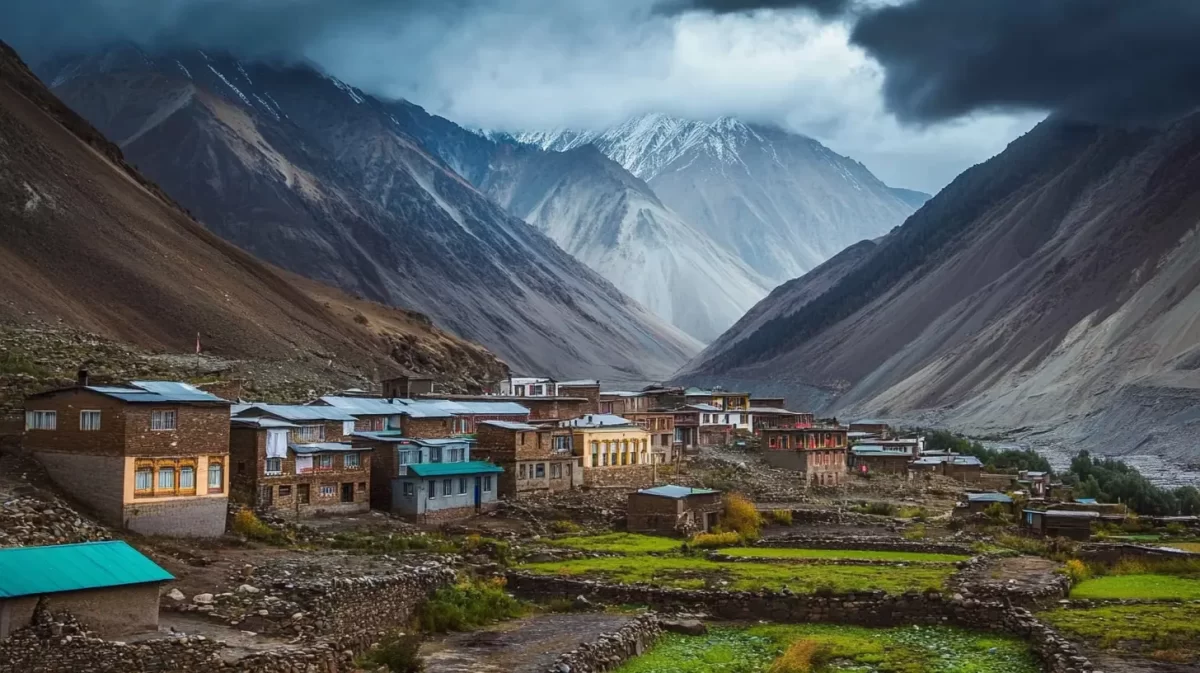

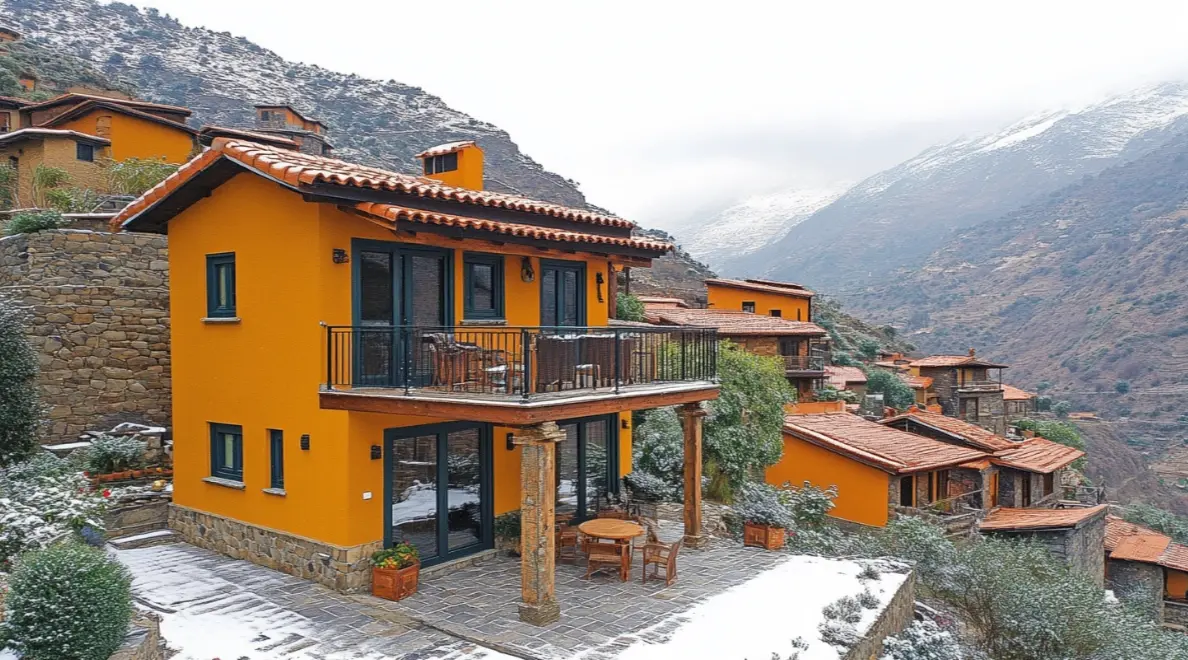

Rural villages and urban areas may face a variety of environments. Considering that these areas are relatively remote, if the network is affected by these environments, maintenance engineers will have to frequently visit the site for maintenance, making the entire project extremely troublesome and the maintenance cost high. The following situations encountered in the Edgeware project experience are worthy of special attention:
- Mountainous areas with frequent climate changes
Because these areas are in mountainous areas, the area changes frequently. Sometimes it rains and then it is sunny. These frequently changing weather conditions can easily cause more serious corrosion to the housing of network equipment systems than in normal climates.
- Areas near the sea
The air humidity in areas near the sea is very high, and the air also has a high salinity. This will accelerate the corrosion of network equipment.
- Low temperature areas
There are some areas with extremely low temperatures in winter. When the temperature is below -10℃, it will greatly affect the operation of the battery. As we mentioned before, these areas often do not have power grids and need to rely on solar systems to work. So how to keep the battery working properly in low temperatures in winter is crucial to the entire network system.
- High humidity areas
There are many areas with high humidity all year round. These areas face the same problems as coastal areas.
In short, the complex environment of rural areas has a great impact on the network system because of the long distance and high cost of station maintenance.
1.6 Rural Area ARPU too Low
The biggest problem in providing rural internet connection services to villages and towns in remote areas is that the population density in these areas is not high enough. If general telecom carriers are used to provide coverage services, the ARPU is too low to recover the cost. This is the biggest reason why many remote areas in many countries do not have network coverage. Some traditional methods have the defect of excessive CAPEX:
- Fiber Coverage
Fiber coverage is the most unrealistic coverage method because it requires huge investment to deploy fiber from fiber pop points in major cities to remote towns. These investments include infrastructure costs, fiber costs, and other expenses. However, the low population density in remote areas means that their income cannot cover the expenses.
- Macro 4G Node B
The coverage of Macro 4G Node B basestation is also undesirable because the deployment of macro 4G node B involves backhaul network design, base station tower construction, daily maintenance and other expenses, and the investment cost is too high.
- GPON
GPON coverage is essentially the same as fiber coverage, and there is also the problem of revenue not covering expenditure.
Therefore, the construction of village broadband connection and rural urban connection requires a simpler and lower-cost network architecture to adapt to the characteristics of the rural area.
2. The Essence of How to Make Rural Area Connections Profitable
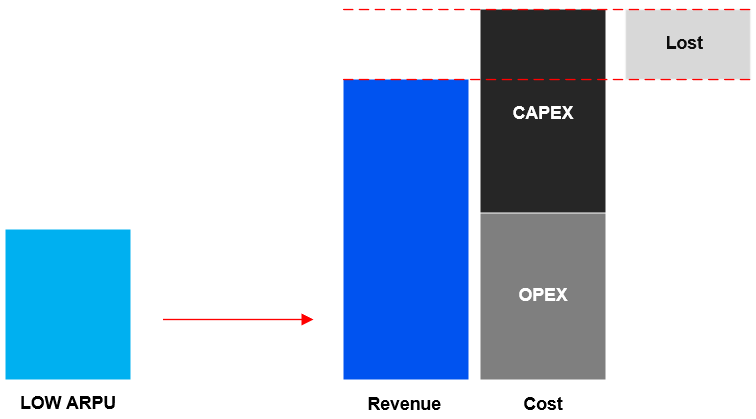
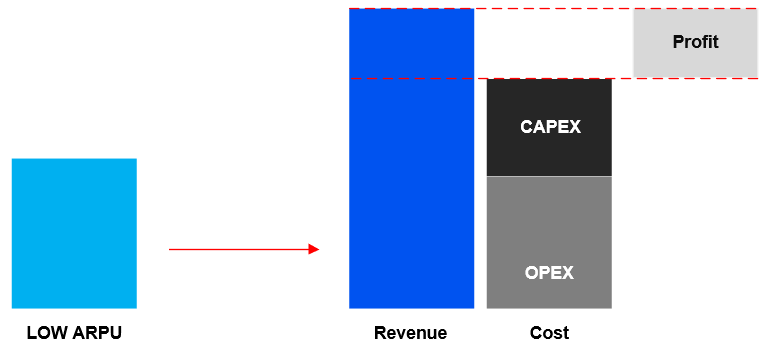
The comparison in the above figure actually reflects the essence of poor rural area coverage, that is, the low population density leads to low ARPU, and the corresponding telecom solution is built in the form of urban coverage, and its CAPEX and OPEX are too high, resulting in the entire network being unprofitable.
Therefore, the essence of rural area connections profitability is actually to use low-capacity coverage to reduce the OPEX and CAPEX of network construction, so that profitability can be achieved even in low ARPU scenarios.
3. 4G Small Cell Network Architecture for Rural Internet Connections
3.1 4G Small Cell for Rural Internet Connections
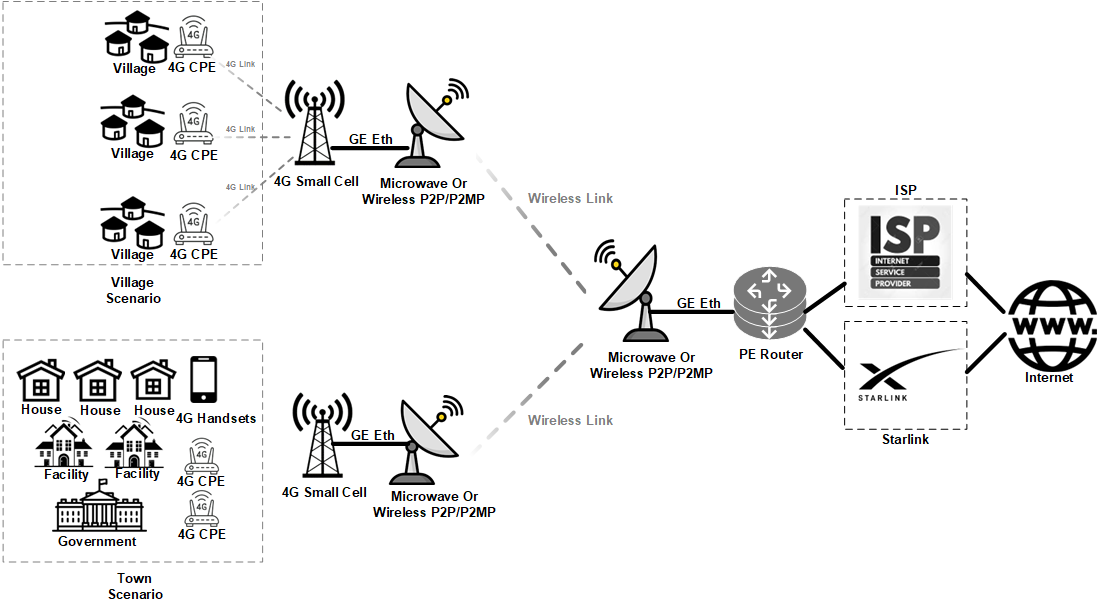
The topology diagram above uses 4G small cell as the main technical means to provide Rural Internet Connections. We will explain it in several parts:
ISP and Central Office
Central Office is the core node of the entire network and provides the Internet outlet. In some developed areas, you can choose to rent an ISP as a network outlet, but in fact, this is very difficult in the rural areas of developing countries. Starlink can be a good solution as a fast and cheap solution.
Central Office to Distribution Node
There is no optical fiber between the central office and the distribution node, so microwave and wireless P2P/P2MP are generally used.
Access Node
Access node will be deployed in an area such as a village or town, and 4G small cell will be used to provide coverage.
Final User
Final users have different organizational forms. For example, very small villages can provide 4G CPE in each village to provide network coverage. For the town scenario, the user types will be more diverse. For example, for government, enterprises and various facilities, 4G CPE can be used to provide rural Internet connections, while for houses and individual users, various smart terminals such as phones and pads can be considered for use.
3.2 Advantages of 4G Small Cells
Compared with the general marco 4G node B, the advantages of 4G small cell are as follows:
Easy and convenient installation
4G small cells do not require very tall towers and are very easy to install. Considering the inconvenience and high cost of various civil works in rural areas, easy installation is a huge advantage.
Low CAPEX investment
4G small cells are designed for Village Broadband Connection and Rural Urban Connection with limited capacity, which reduces CAPEX. Generally, the investment cost of a sector ranges from 4000 to 8000 USD.
Low operation and maintenance cost
4G small cells do not need to perform a lot of regular maintenance work like large base stations, saving daily OPEX.
These combined advantages are particularly suitable for the low ARPU of Rural Internet Connections, making it possible to operate Rural Internet Connections profitably.
3.3 Solar Power or UPS Power for 4G Small Cell
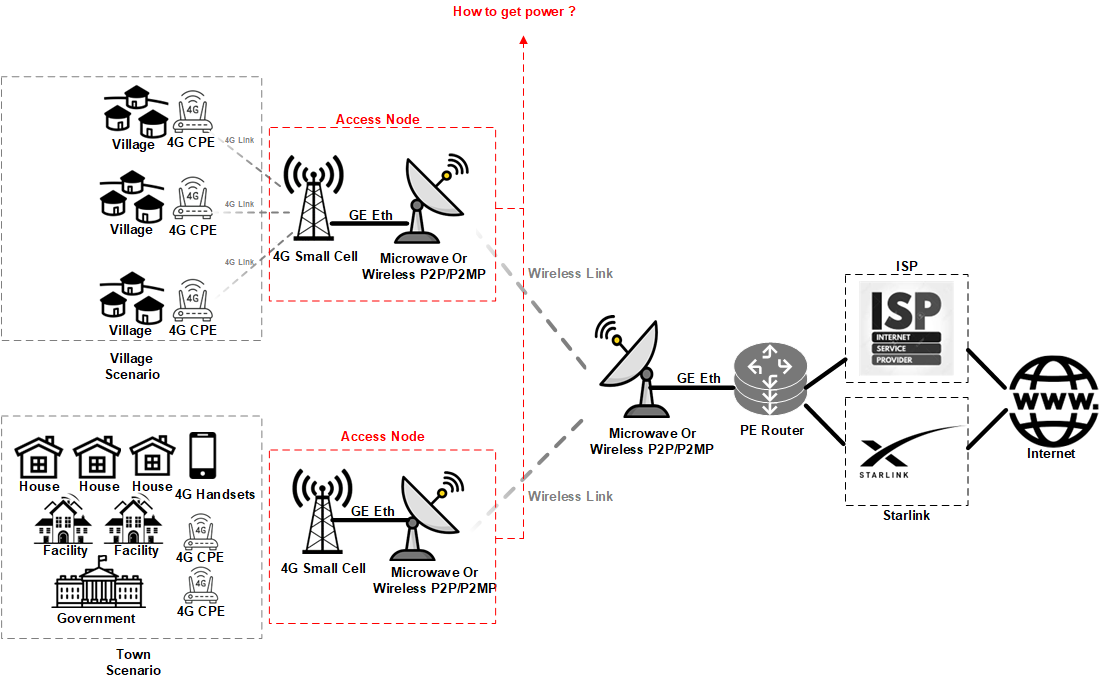
The Access Node is the most difficult location to obtain power. It generally faces two possibilities:
(1) Although power can be obtained, it is unstable
In many cases, the power grid in rural areas is unstable and often loses power. In some areas of Africa, sometimes there is only power for a few hours a day, and the rest of the time the power grid is offline. In such cases, we need to correctly configure a battery UPS for the entire small cell system.
(2) There is no power grid coverage at all
In more scenarios, it is necessary to configure a solar power system for the access node. In this case, it is necessary to correctly calculate the power consumption of the entire system and the solar energy resources in the deployment area.
However, this is only theoretical. In actual deployment, there are many challenges because the site is located in a rural area:
(1) Equipment transportation is difficult because the site is remote.
Imagine that whether it is a UPS site or a solar site, the equipment is not small according to the traditional solution. Because the site is remote, the cost of transporting the equipment to the site must be considered.
(2) Installation and integration difficulties caused by remote sites
Rural Internet Connections are difficult to install and integrate because they are located in remote areas. If the site installation is too complicated, it will cause engineers to spend too much time in the local area. In addition, the time and cost of commuting will make the entire installation cost too high.
(3) Daily maintenance
As we mentioned in the previous article, the environmental conditions in rural areas are relatively complex. For example, some high-humidity areas in the mountains or areas with frequent climate changes, or some coastal areas will cause rust and other problems to the equipment. This increases the probability of engineers going to the site for maintenance, which greatly increases the maintenance cost of the entire network.
All of the above are contrary to the principles we described in Chapter 2.The Essence of How to Make Rural Area Connections Profitable.
Therefore, building a 4G Small Cell access node in terms of power is not as simple as imagined.
3.4 Edgeware Integrated Soluiton for 4G Small Cell Based On UPS Scenario
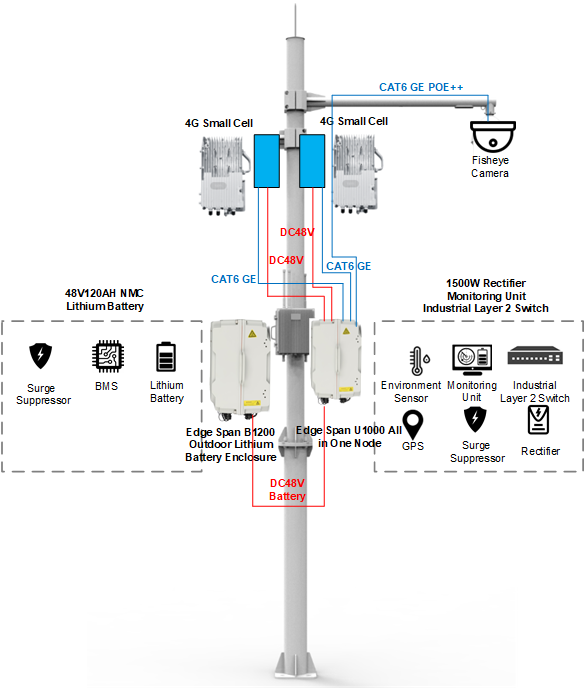
Edgeware is good at helping customers design 4G small cell coverage power solutions. The Edge Span series based on Edgeware can build a low-maintenance, highly integrated, surface-to-site integrated, maintenance-free system. This greatly simplifies site installation. It makes the construction of Rural Internet Connections no longer difficult, whether it is Village Broadband Connection or Rural Urban Connection.
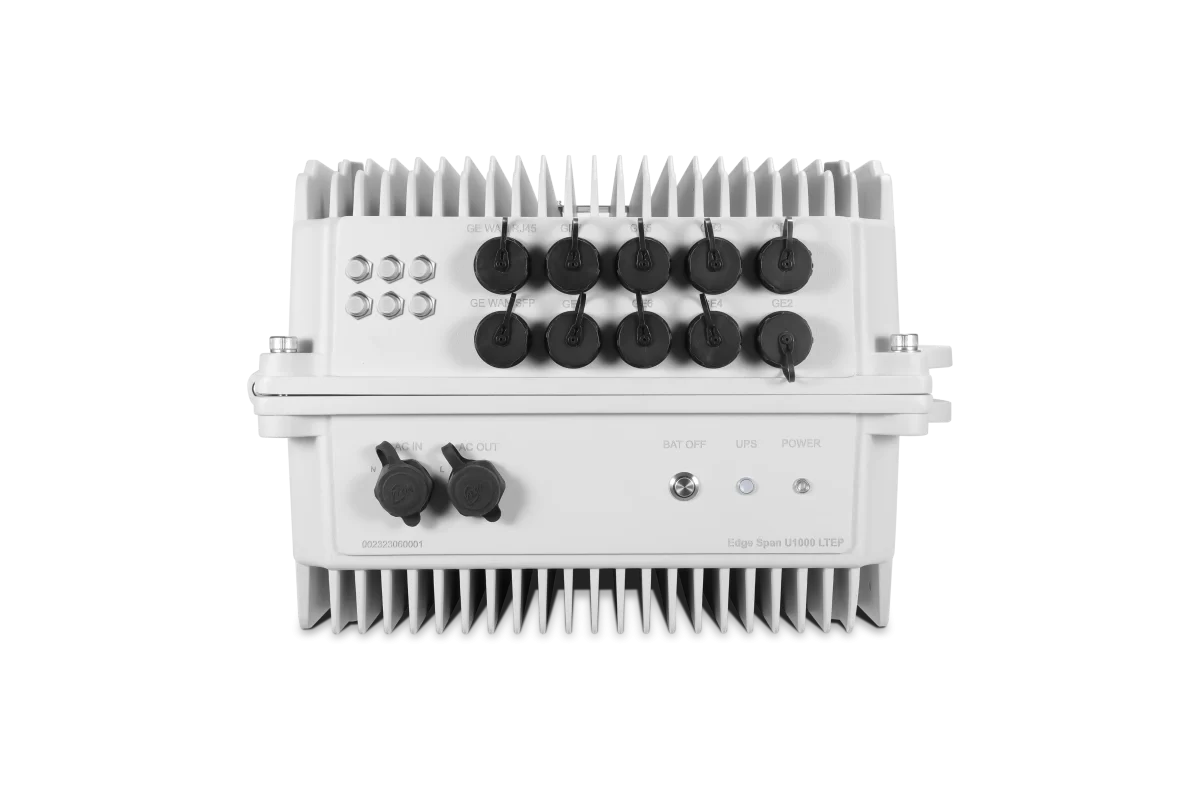
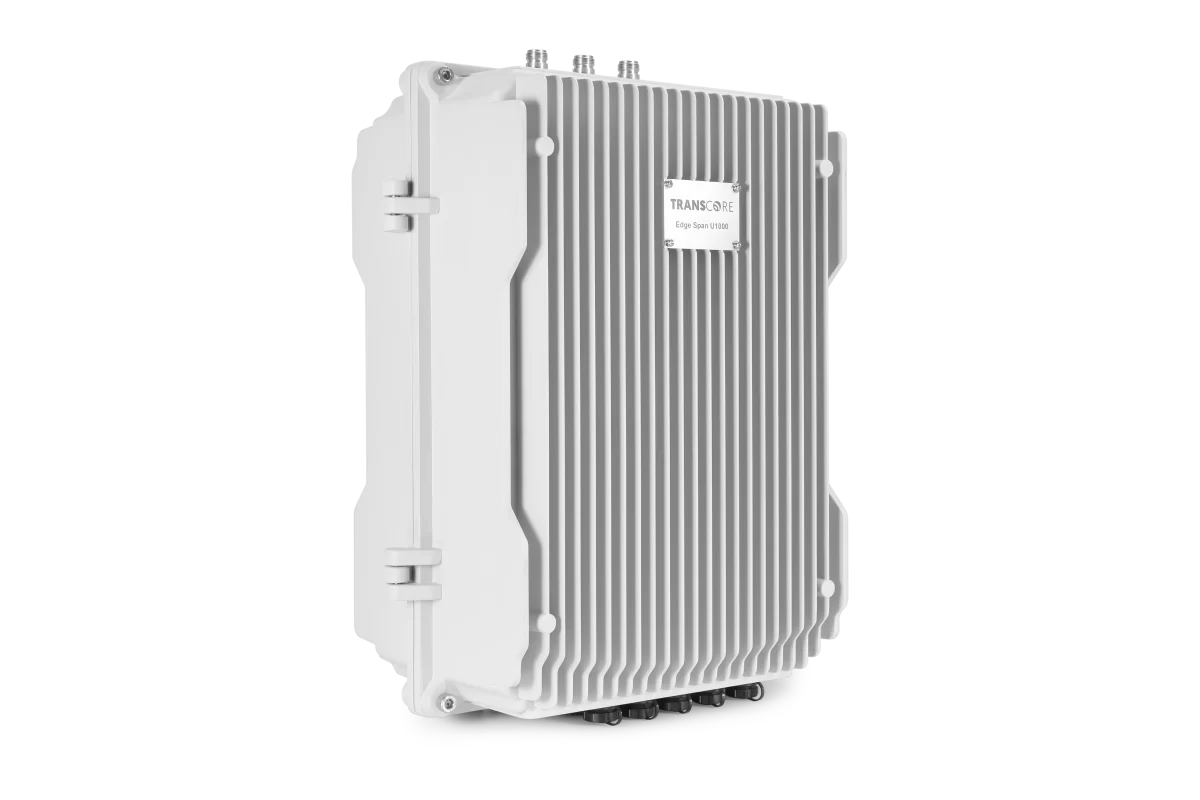
The Edge Span U1000 series has a high overall integration and IP65-level ingress protection. The entire system is built with a cast aluminum housing and is maintenance-free. It can be customized based on the customer’s scenario, please refer to the following link:
3.5 Edgeware Integrated Soluiton for 4G Small Cell Based on Solar Power
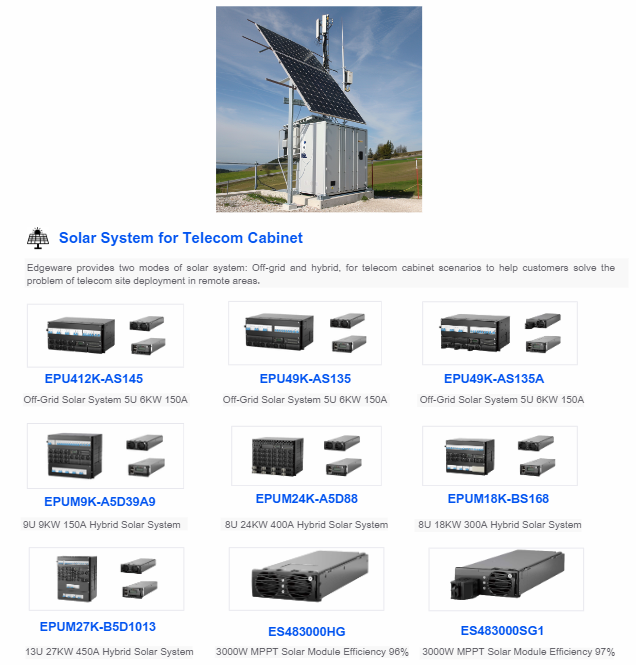
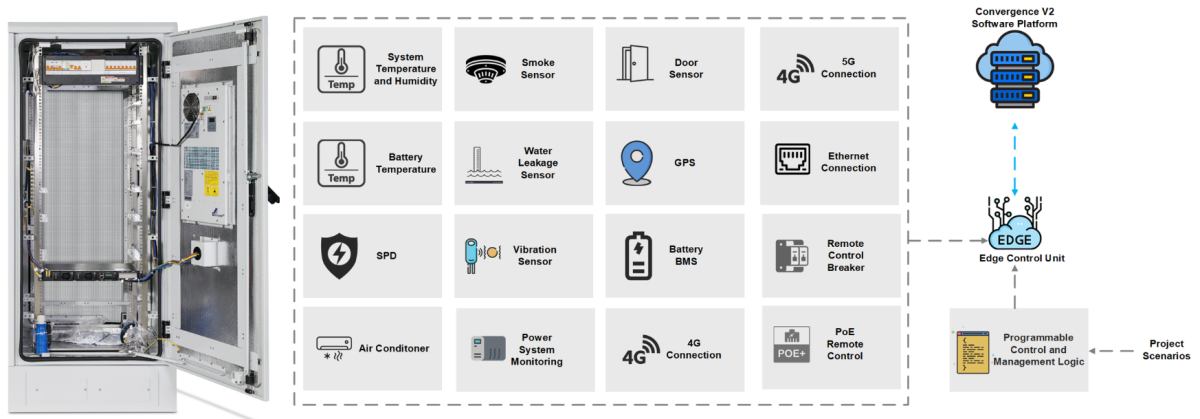
The scale of the solar site in the 4G small cell scenario is not very small, because the power of a 4G small cell sector is usually around 400-600W. Therefore, the solar site will be a relatively large telecom cabinet. If you want to build such a site in a rural area, its complexity is relatively high. Edgeware can help you design and provide an end-to-end solution, thus eliminating the complex issues of installation design integration.
4. Building Rural Internet Connections based on Wireless P2P/P2MP and WIFI
4.1 Network Architecture of Rural Internet Connections based on Wireless P2P/P2MP and WIFI
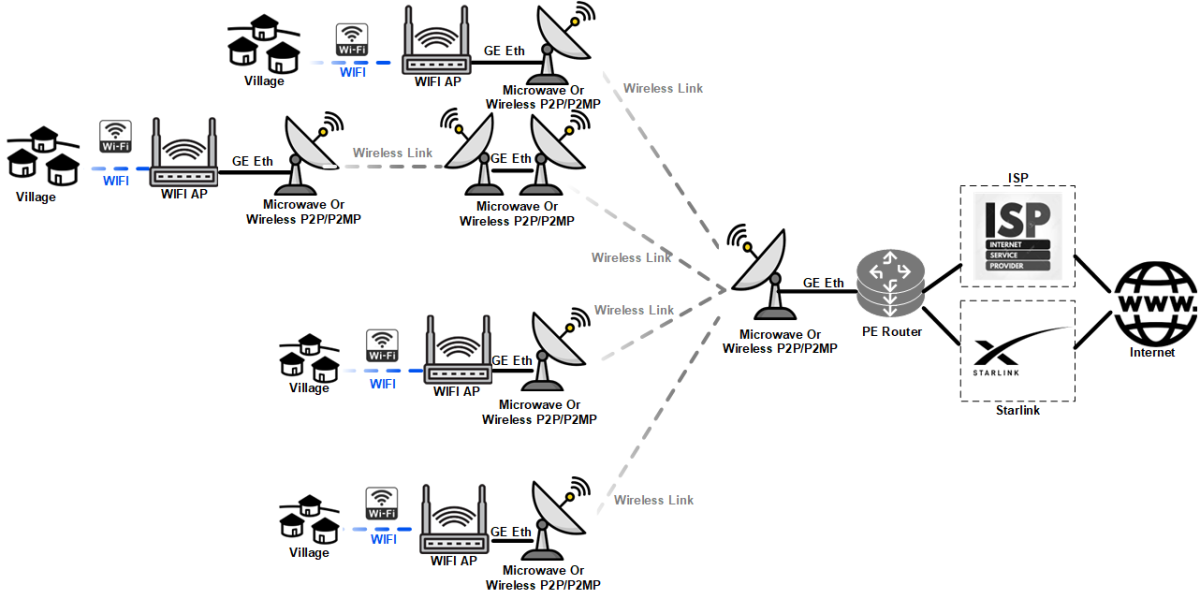
The above figure shows a network architecture that uses wireless P2P/P2MP and WIFI to implement rural Internet connection. This method will provide Village Broadband Connection and Rural Urban Connection at a lower cost than 4G small cell, but its network capacity will also be lower than 4G small cell. This construction method is more suitable for remote villages in Africa and Latin America. In these areas, each village has a small population, and a village only needs a few WIFI APs to cover the network usage of everyone.
ISP and Central Office
This scenario is usually more difficult to find a suitable ISP to provide service, Starlink is a more accessible Internet provider.
Central Office to Distribution Node
There is no optical fiber between the central office and the distribution node, so microwave and wireless P2P/P2MP are generally used.
Intermedia Node
Due to the distance limitation of Wireless P2P/P2MP technology, there are many cases where relay stations may be needed to extend the transmission distance.
Access Node
The target customers of this network architecture are often villages with low population density. In this scenario, the access node usually only needs a back-to-back connection between the WIFI AP and the Wireless P2P device.
Final User
End customers use their own smart phone, pad or computer to connect to the Internet via WIFI.
4.2 Advantages of Rural Internet Connections based on Wireless P2P/P2MP and WIFI
Using wireless P2P/P2MP and WIFI to build rural Internet connections has the following obvious advantages:
Simple Site Installation
The site setup is very simple. Whether it is a relay site or an access node, there are only 2-3 devices interconnected, and there is no complicated configuration.
Low CAPEX investment
The investment cost is much lower than that of 4G small cell.
Low operation and maintenance cost
Debugging is easy, the equipment is simple to operate, and no professional engineers are required to do daily maintenance.
4.3 Solar Power or UPS Power for Wireless P2P/P2MP and WIFI
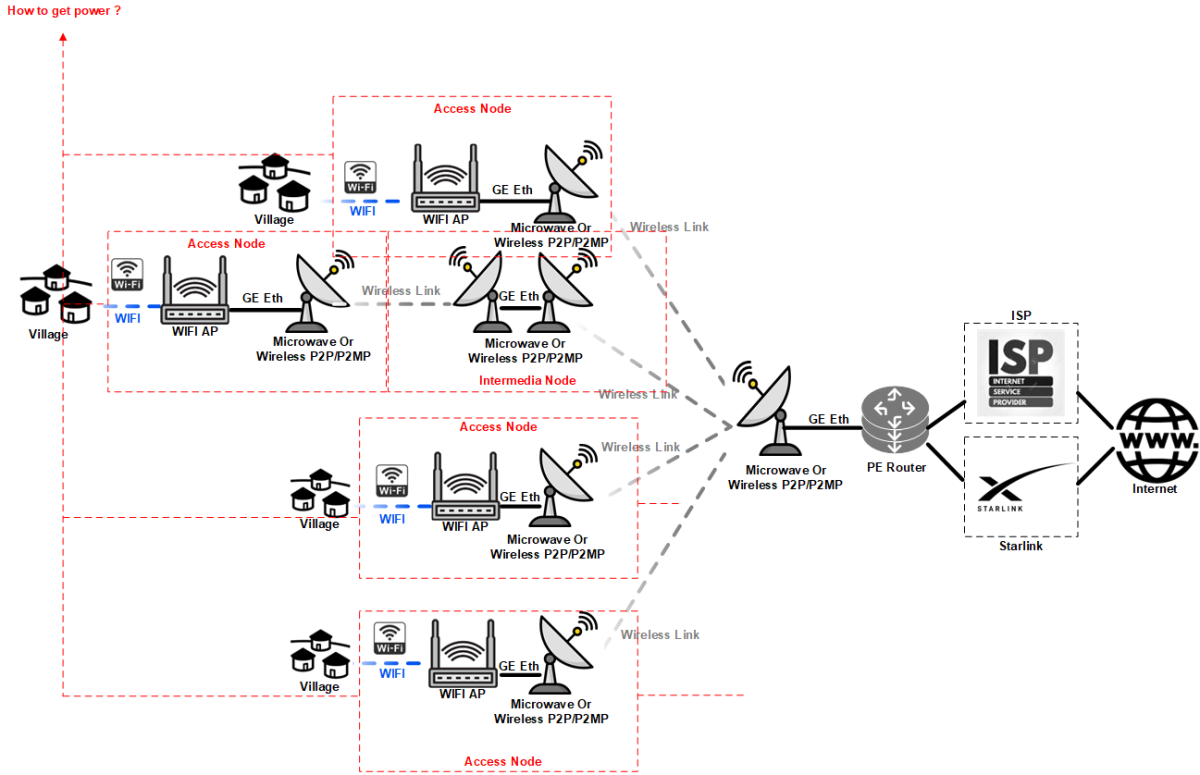
For the wireless P2P/P2MP plus WIFI solution, the pressure of building a power solution is actually much less than that of 4G small cell. This is because neither WIFI AP nor Wireless P2P/P2MP equipment is a high power consumption device. Let’s analyze the power requirements under this network architecture.


We can see that the power consumption of typical Wireless P2P/P2MP devices is generally not high. For example, the Mikrotik 60GHz P2P antenna in the above picture has a power consumption of only 5W and is powered by POE/POE+. Other wireless P2P/P2MP devices are similar, and generally have the following characteristics:
Power consumption ranges from 5-50W
Powered by POE/POE+/POE++
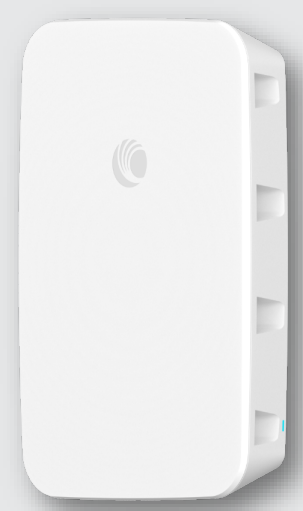
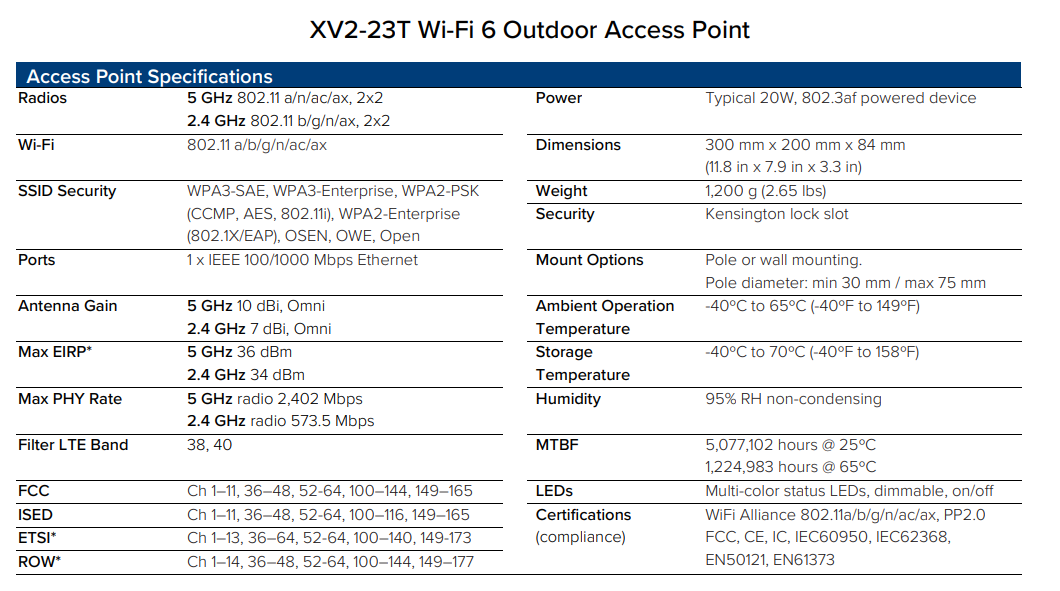
The above is an outdoor WIFI AP from Cambium network. We can see that its typical power consumption is 20W, and its power supply method is POE (802.3af). Generally speaking, outdoor WIFI APs have the following characteristics:
Power consumption ranges from 5-50W
Powered by POE/POE+/POE++
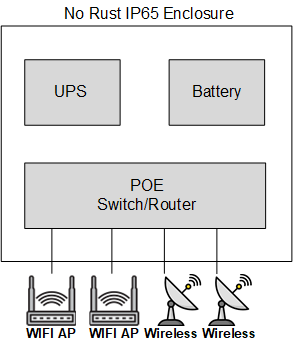
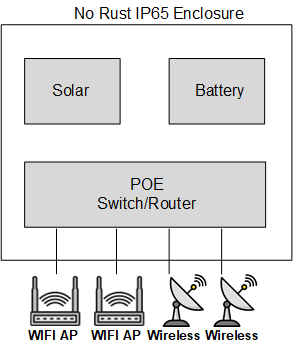
Rural Internet Connections based on Wireless P2P/P2MP and WIFI technologies have the same problems as 4G Small Cells:
(1) Equipment transportation is difficult because the site is remote.
(2) Installation and integration difficulties caused by remote sites
(3) Daily maintenance
We believe that the device that provides power for wireless P2P and WIFI should be an all-in-one, highly integrated device that does not require site integration. It is best to be lightweight and easy to install, integrating network and power. Above picture is a simplified model.
4.4 Edgeware Integrated Soluiton for Wireless P2P/P2MP and WIFI Based On UPS Scenario
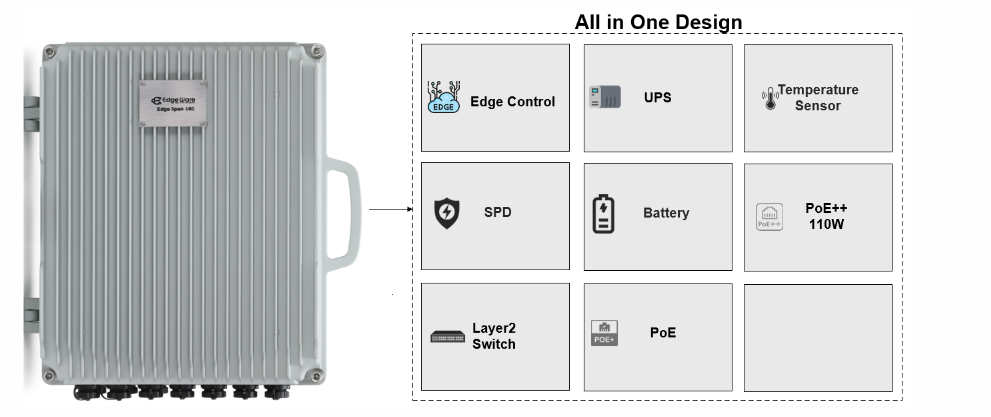
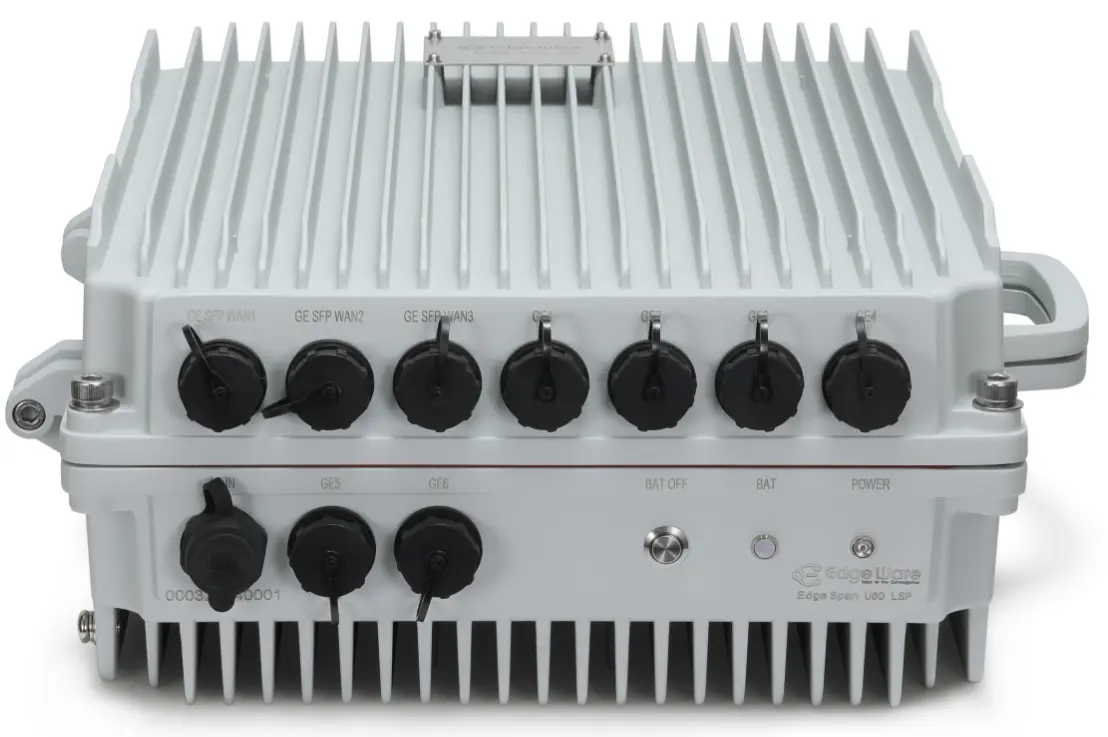
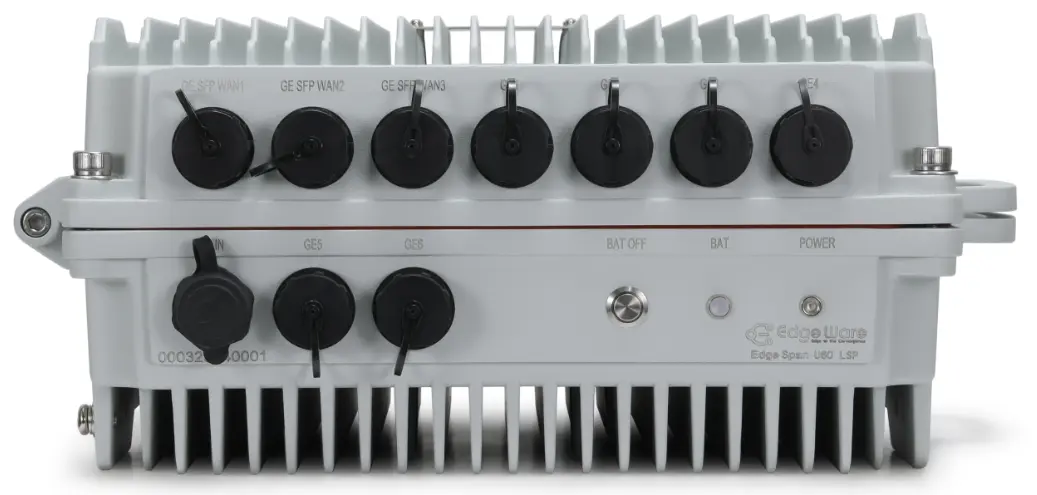
Edgeware’s Edge Span U60 series is an all-in-one system designed specifically for outdoor Wireless P2P/P2MP and WIFI scenarios based on UPS power. It is specially optimized for the deployment of Rural Internet Connections and has the following features:
Based on the characteristics of rural areas that are difficult to transport and install, the highly integrated design makes the entire system small and lightweight.
No need for complex system interconnection, the whole machine is standardized when it leaves the factory, and plug and play is available at the site, thus avoiding complex installation and commissioning at the site.
The entire system is IP65 protected, the cast aluminum shell of the whole machine is completely rust-proof, and the whole machine is completely maintenance-free due to natural heat dissipation.
The system has a built-in Layer2 POE Switch module that supports POE/POE+POE++ standards, making it fully compatible with various outdoor wireless P2P/P2MP devices and outdoor WIFI APs.
Based on these features, Edge Span U60 can easily handle both Village Broadband Connection and Rural Urban Connection scenarios. For more information, please refer to the following link:
4.5 Edgeware Integrated Soluiton for Wireless P2P/P2MP and WIFI Based on Solar Power
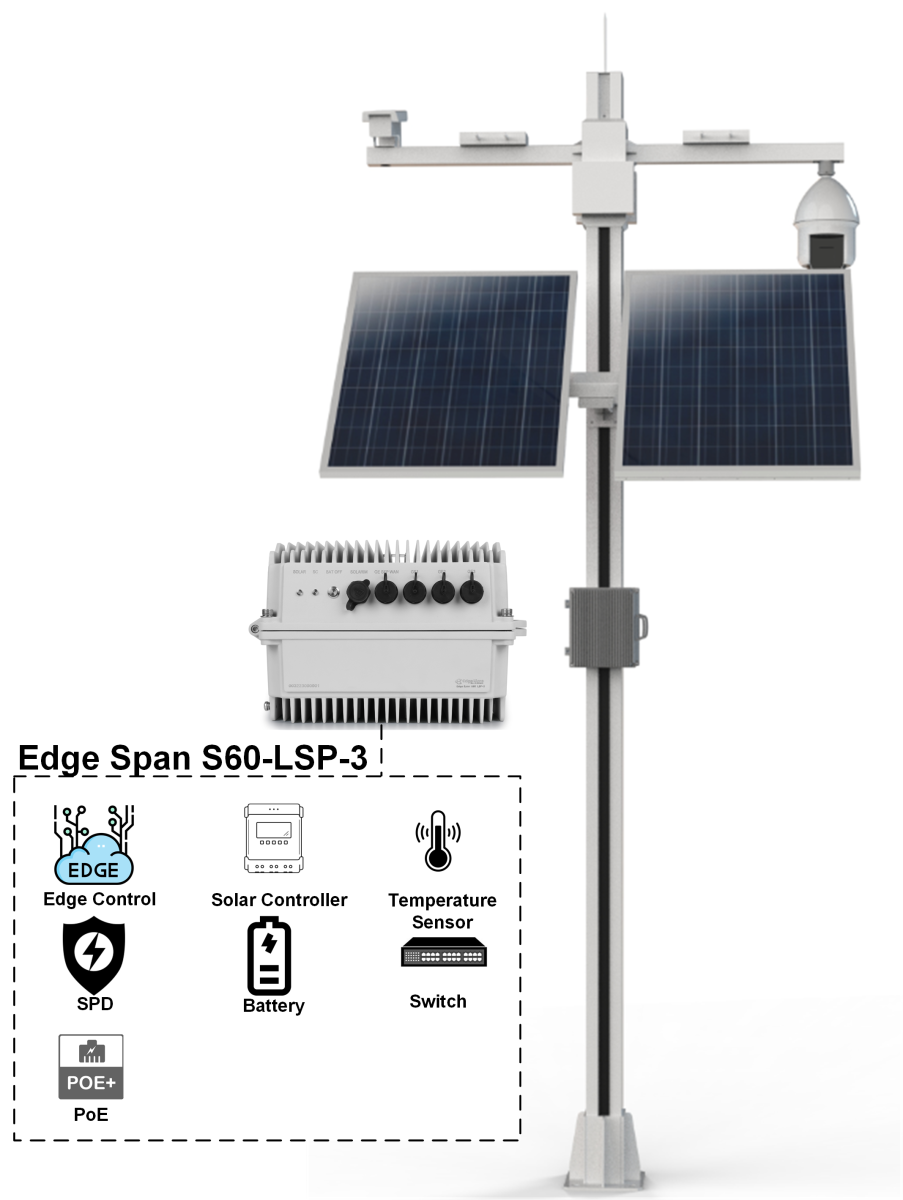
Edgeware’s Edge Span S60 series is an all-in-one system designed specifically for outdoor Wireless P2P/P2MP and WIFI scenarios based on solar power.It has all the features of the Edge Span series and the entire system is based on a high-efficiency MPPT solar controller
Based on these features, Edge Span U60 can easily handle both Village Broadband Connection and Rural Urban Connection scenarios. For more information, please refer to the following link:
5. Summary
In short, Build Rural Internet Connections, whether it is Village Broadband Connection or Rural Urban Connection, needs to pay special attention to OPEX and CAPEX. In particular, it is necessary to reduce OPEX from the technology itself to ensure that Build Rural Internet Connections is a profitable project, so that rural area coverage becomes a positive cycle business, which not only makes profits for the company, but more importantly, benefits ordinary people in the rural area.

